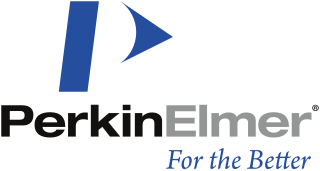
Compaq Computer Corporation was an American information technology company founded in 1982 that developed, sold, and supported computers and related products and services. Compaq produced some of the first IBM PC compatible computers, being the second company after Columbia Data Products to legally reverse engineer the BIOS of the IBM Personal Computer. It rose to become the largest supplier of PC systems during the 1990s before being overtaken by Dell in 2001. Struggling to keep up in the price wars against Dell, as well as with a risky acquisition of DEC, Compaq was acquired for US$25 billion by HP in 2002. The Compaq brand remained in use by HP for lower-end systems until 2013 when it was discontinued. Since 2013, the brand is currently licensed to third parties for use on electronics in Brazil and India.

Digital Research, Inc. was a privately held American software company created by Gary Kildall to market and develop his CP/M operating system and related 8-bit, 16-bit and 32-bit systems like MP/M, Concurrent DOS, FlexOS, Multiuser DOS, DOS Plus, DR DOS and GEM. It was the first large software company in the microcomputer world. Digital Research was originally based in Pacific Grove, California, later in Monterey, California.

Novell, Inc. was an American software and services company headquartered in Provo, Utah, that existed from 1980 until 2014. Its most significant product was the multi-platform network operating system known as Novell NetWare.
Convergent Technologies, Inc., was an American computer company formed by a small group of people who left Intel Corporation and Xerox PARC in 1979. Among the founders were CEO Allen Michels, VP Engineering Bob Garrow, head of marketing Kal Hubler, and operating system architect Ben Wegbreit. Convergent was primarily an OEM vendor with their computers resold by other manufacturers such as ADP, AT&T, Burroughs, Four-Phase Systems, Gould, Mohawk, Monroe Data Systems, NCR, and Prime. The company was purchased by Unisys in 1988.

The Santa Cruz Operation, Inc. was an American software company, based in Santa Cruz, California, that was best known for selling three Unix operating system variants for Intel x86 processors: Xenix, SCO UNIX, and UnixWare.

Logica plc was a multinational IT and management consultancy company headquartered in London and later Reading, United Kingdom.

PerkinElmer, Inc., previously styled Perkin-Elmer, is an American global corporation that was founded in 1937 and originally focused on precision optics. Over the years it went into and out of several different businesses via acquisitions and divestitures; these included defense products, semiconductors, computer systems, and others. By the 21st century, PerkinElmer was focused in the business areas of diagnostics, life science research, food, environmental and industrial testing. Its capabilities include detection, imaging, informatics, and service. It produced analytical instruments, genetic testing and diagnostic tools, medical imaging components, software, instruments, and consumables for multiple end markets. PerkinElmer was part of the S&P 500 Index and operated in 190 countries.

The Model 7/32 and Model 8/32 were 32-bit minicomputers introduced by Perkin-Elmer after they acquired Interdata, Inc., in 1973. Interdata computers are primarily remembered for being the first 32-bit minicomputers under $10,000. The 8/32 was a more powerful machine than the 7/32, with the notable feature of allowing user-programmable microcode to be employed.

The Massachusetts Computer Corporation (MASSCOMP) was a computer manufacturer based in Westford, Massachusetts. Originally conceived by C. Forbes Dewey of MIT and inventor Chester Schuler, it was founded formally in 1981. Its target market was real-time computing, with a focus on high-speed data acquisition. Its major innovation was that it created the first widely available computer product which was able to sample analog signals at one million samples per second and store the resulting data to disk continuously. Given the technology available at the time—Motorola 68000 series CPUs of only a few megahertz in speed and slow disk drives—this product represented quite a technological achievement.
Systems Engineering Laboratories was a manufacturer of minicomputers in Fort Lauderdale, Florida. It was one of the first 32-bit realtime computer system manufacturers. Realtime computers are used for process control and monitoring.
Vecima Networks is a Canadian company that develops hardware and software for broadband access, content delivery, and telematics. It was founded in Saskatoon, Saskatchewan, and currently has offices in Saskatoon, Burnaby, Atlanta, London, Amsterdam, Tokyo, and is headquartered in Victoria. Vecima sells its products to original equipment manufacturers (OEMs), system integrators, MSOs and other service providers.
Applied Biosystems is one of various brands under the Life Technologies brand of Thermo Fisher Scientific corporation. The brand is focused on integrated systems for genetic analysis, which include computerized machines and the consumables used within them.

Interdata, Inc., was a computer company, founded in 1966 by a former Electronic Associates engineer, Daniel Sinnott, and was based in Oceanport, New Jersey. The company produced a line of 16- and 32-bit minicomputers that were loosely based on the IBM 360 instruction set architecture but at a cheaper price. In 1974, it produced one of the first 32-bit minicomputers, the Interdata 7/32. The company then used the parallel processing approach, which uses more than one computer processor simultaneously to perform work on a problem. This helped in making real-time computing a reality.

Human Computing Resources Corporation, later HCR Corporation, was a Canadian software company that worked on the Unix operating system and system software and business applications for it. Founded in 1976, it was based in Toronto.
Systime Computers Ltd was a British computer manufacturer and systems integrator of the 1970s and 1980s. During the late 1970s and early 1980s, Systime become the second largest British manufacturer of computers, specializing in the minicomputer market.
Parallel Computers, Inc. was an American computer manufacturing company, based in Santa Cruz, California, that made fault-tolerant computer systems based around the Unix operating system and various processors in the Motorola 68000 series.
Thoth is a real-time, message passing operating system (OS) developed at the University of Waterloo in Waterloo, Ontario Canada.
Chorus Systèmes SA was a French software company that existed from 1986 to 1997, that was created to commercialise research work done at the Institut national de recherche en informatique et en automatique (INRIA). Its primary product was the Chorus distributed microkernel operating system, created at a time when microkernel technology was thought to have great promise for the future of operating systems. As such Chorus was in the middle of many strategic partnerships regarding Unix and related systems. The firm was acquired by Sun Microsystems in 1997.
Harris Computer Systems Corporation was an American computer company, in existence during the mid-1990s, that made real-time computing systems. Its products powered a variety of applications, including those for aerospace simulation, data acquisition and control, and signal processing. It was based in Fort Lauderdale, Florida. For twenty years prior, it had been the Harris Computer Systems Division of Harris Corporation, until being spun off as an independent company in 1994. Then in 1996, Harris Computer Systems Corporation itself was acquired by Concurrent Computer Corporation.












